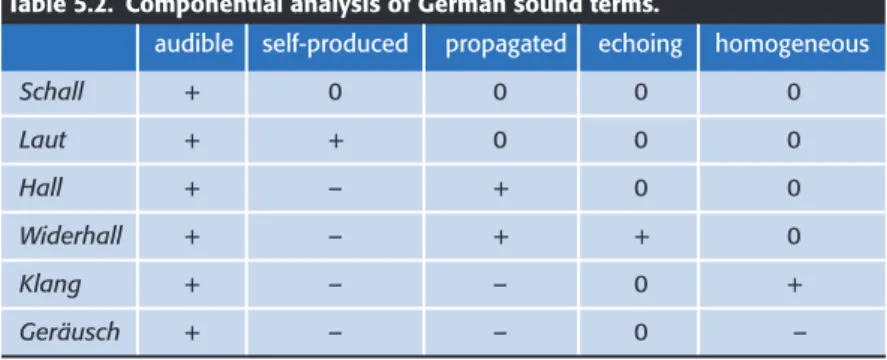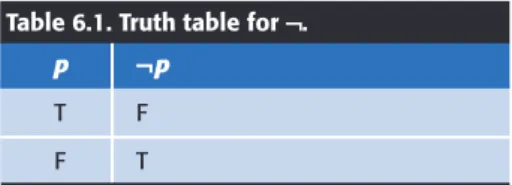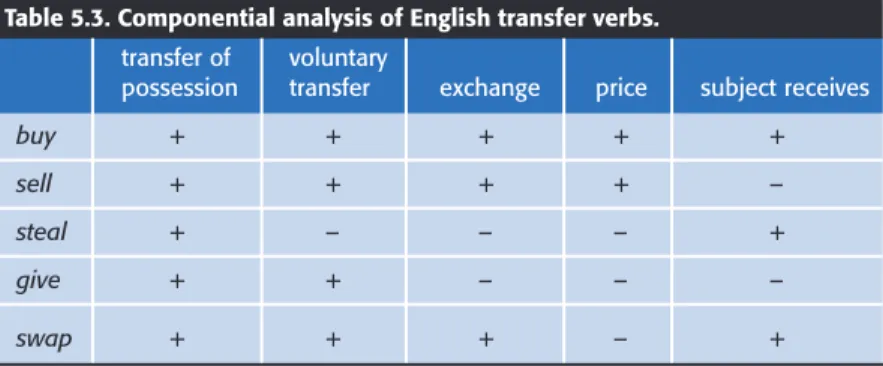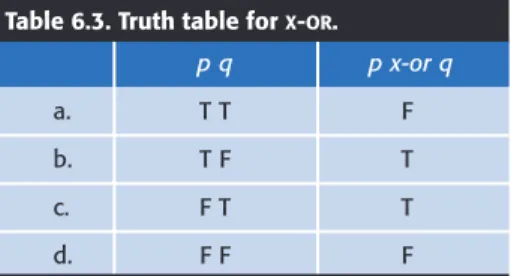NICKRIEMER is a Senior Lecturer in the Departments of English and Linguistics at the University of Sydney. Published in the United States of America by Cambridge University Press, New York www.cambridge.org.
7 Meaning and cognition I: categorization and
8 Meaning and cognition II: formalizing and
10 Meaning and morphosyntax II: verb
Thus, the reader will find an explanation of the foundations of, among other things. The further reading sections at the end of each chapter attempt to provide some possible starting points for further exploration of the field.
CHAPTER PREVIEW
What is semantics?
What is the relationship between what a word means and the contexts in which it is used. Each of the chapters in this book introduces some essential concepts for understanding the ways in which meaning can be analyzed in linguistics.
Meaning, communication and significance
The use of fully articulated language, which does involve a communicative intention, is therefore only the most complete and most explicit way in which we obtain information about our environment: consequently, the meaningfulness of language can be seen as a subset of the meaningfulness of human behavior . In this case, the other people at the table might conclude that the three cries were substitutes for the three syllables of the sentence 'I'm choking!', and would act on the basis of this (correct) assumption.
Talking about meaning in English and other languages
In the same way, it is one thing to talk about the motions of celestial bodies such as the moon and stars – we do that all the time, informally – but quite another to have a scientific understanding of it. It will help us to accomplish this task if we examine the everyday vocabulary used to talk about meaning in English and other languages.
1.2.1 ‘Meaning’ in English
Each of these three categories of ordinary language description emphasizes a particular aspect of the phenomenon. True description emphasizes the objective facts of the situation by focusing on the relationship between language and reality: whether the language used corresponds to the actual state of affairs.
1.2.2 ‘Meaning’ in Warlpiri
For example, in the following example, the speaker explains the meaning of the word ngalyarra:. But the verb used here, ngarri-rni, which simply means "to call," does not refer to the speaker's intentions, an important part of the concept of "meaning" in English.
1.2.3 ‘Meaning’ in French
Asking "what does that mean?" in French it is to ask "what do you want to say?". What do you mean by this?'. 18) Que veut dire cette Latin phrase. what does this latin phrase mean.
1.2.4 ‘Meaning’ in Chinese
The semiotic triangle: language, mind, world and meaning
The last vertex of the triangle is the 'referent', or whatever things, events or situations in the world the language refers to. In the case of the referent (which, as we have already seen, must itself already be considered within the domain of psychology), the causal connection comes from the fact that by using language we have meant that our words must have a certain referent have.
Some initial concepts
- Lexemes
- Sense/reference/denotation/connotation
- Compositionality
- Levels of meaning
However, this does not mean that "reigning monarch" is the only meaning of the word queen. The sentence meaning (33) is the literal, compositional meaning, as it consists of the meanings of the individual words of the sentence.
Object language and metalanguage
In any case, we have provided a definition of the word that will help an English speaker understand the meaning of the Dutch sentence. But this definition would only be effective if we already knew the meaning of "fun".
Breaking the circle
- Meanings as referents/denotations
- Meanings as concepts/mental representations
- Meanings as brain states
- Meaning and use
Outside the narrow context of (38), we might say that the meaning of bridge in general is only its designation — the class of all bridges. In (40a) we have alternative ways of referring to Sweden, in (40b) of umbrellas, in (40c) of the Spanish confectionery king Enric Bernat Fontlladosa, and in (40d) of the word bank.
Meaning and explanation
Despite the perhaps greater possibilities at the phrasal level, the problem for the theory of the use of meaning remains the enormous variety of sentences that make up the linguistic behavior of each individual. All that needs to be said is that in all these cases attention to the explanatory purpose of the talk about meaning will direct us to whatever conception of meaning seems to provide the best explanation of the particular meaning phenomenon.
Summary The meaningfulness of language is an instance of the meaningfulness of behaviour
Other words, however, seem best explained by the specific conceptual associations they evoke; for these, attention to the connection between words and concepts will be most important. This is not to say that concepts are irrelevant to expressions like this man, or to words like those in (44), or that referents and denotations are irrelevant to words like vacation or nightmare.
Meaning’ is a very vague term
Indeed, in most cases we will have to pay attention to all three aspects of a word's 'meaning', by examining how its relations with referents/meanings, associated concepts and usages mutually combine to determine its presence in a given language context. explain. .
The semiotic triangle
Lexemes
Sense, reference, denotation and connotation
Compositionality
Sentence and utterance meaning
Object language and metalanguage
Explanations of meaning in terms of meanings are circular
For information on non-European semantic traditions and a discussion of the Greek origins of Western semantics, see van Bekkum et al. Ullmann (1972) and Ogden and Richards (1949) are classic works in the history of semantics, which still hold many insights.
Exercises
Cummins (1989) is an introduction to meaning and mental representation, and Murphy (2002) is a compendium of psychological research on concepts, including their relation to word meaning.
Questions for discussion
Four ways of breaking the circle
Meaning and the dictionary
- Semantics and lexicography
In this view, the main task of linguistic semantics would be to specify the stored meaning representation - the "entry" - associated with each lexeme in the mental lexicon:. These and other questions should be answered in a comprehensive description of the mental lexical entry for the verb pour.
The units of meaning
- Words and morphemes
- Meanings below the morpheme: sound symbolism
- Meanings above the word level: idioms
- Contextual modulation of meaning
- First possibility: compositionality
- Second possibility: non-compositionality
The first possibility is that the meanings of cutting off someone's foot, mowing the lawn, cutting a cake, etc., arise in composition from the meaning of the verb to cut and the meanings of the nouns. The first is the vast number of different senses that can be attributed to cutting.
Different ways of defining meanings
- Real and nominal definition
- Definition by ostension
- Definition by synonymy
- Definition by context or typical exemplar
- Definition by genus and differentia
This definition only works if the addressee of the definition correctly infers the intended meaning based on the given cue. Consider, for example, a definition of give as 'transfer possession of freely' (Concie Oxford).
Definition and substitutability
Another kind of problem affects cognitive and extensional GD definitions equally, in those cases where it is not clear that the definiendum belongs to any broader class. On this view, a definition is accepted if it can replace the definition 'with the sense intact' (salvo sensu): if, that is, it involves neither addition nor loss of meaning with respect to the meaning of the definition. .
Semantic primitives
Diller (1994), for example, discusses some of the problems encountered in attempting to write NSM definitions using a range of possible Thai (Tai, Thailand) exponents of the primitives. In Thai, overt pronominal forms of reference—the equivalents of the primitives "I" and "you"—are generally omitted unless speakers want to achieve specific communicative goals.
Problems with definitions
One possible answer to this would be to argue that it is only the extreme brevity of the definition of bachelor that accounts for its inadequacy. But since spray and paint are not intuitively synonymous, the definition of paint should exclude spray.
Definition, understanding and use
However, many linguists would reject the argument that the heterogeneity of uses makes a comprehensive definition impossible. We may be quite able to use a word correctly without being able to express a satisfactory definition of it: the knowledge which enables the correct use of the word is unconscious and in no way implies the ability to produce a definition clear.
Meaning, definition and the mental lexicon
To say, then, that concepts are or function as definitions certainly does not mean that we consciously carry a dictionary-like list in our heads.
What units need to receive definition?
Real and nominal definition
Cognitive and extensional definition
Summary
Modes of definition
Semantic primitives
Analytical questions
Meaning and context
But is this difference due to a difference in the meaning of the possessive case or is it a product of the context in which it is used. Nevertheless, each point in the list expresses aspects of the interpretation of the utterance that can be observed separately.
External context: sense and reference
- The Fregean distinction
- The sense/reference distinction and linguistic description
- Reference, speakers and hearers
- The limits of sense and reference
- Deixis
It is not even necessary for the speaker to believe that the description is true of the referent. Instead, the professional harpist has a predicative function: it is part of the information about Marion.

Dictionary and encyclopaedia
- Knowledge of meaning and knowledge of facts
- Problems with the dictionary–
If all the encyclopedic information associated with a word was part of its meaning, it would certainly be too much for the brain to process. Given the underdetermined view of pinyin meaning, the encyclopedic knowledge that Warlpiri speakers have of their world allows them to correctly understand what is meant in the above sentences.
After all, Frenchman' and 'sleeping prince' are part of the frog dictionary, and not just encyclopedic facts about frogs. This kind of phenomenon suggests that there is no possible boundary between knowledge of the meaning of a word and knowledge about the objects the word denotes.
Summary The basic question: meaning and context
Since any fact known about a referent can become linguistically significant, the traditional linguistic semantic project of describing the lexical entry associated with each lexeme becomes an endless task, since each lexical entry is in principle infinite.
External context: sense and reference
Predication and deixis
See the second volume of Devitt and Sterelny (1999) for an introduction to sensory perception and reference approaches in the philosophy of language. Deictic expressions (also known as deictics or indexicals) are defined as expressions that refer to some aspect of the utterance's context as an essential part of their meaning.
Knowledge of meaning and knowledge of facts
Interpersonal context: illocutionary force and speech acts
- Locutionary, illocutionary and perlocutionary acts
- Consequences of the illocutionary perspective
The locative act – the act of saying something – is the act of expressing the basic, literal meanings of the chosen words. Finally, the perlocutionary act is the act of creating an effect on the hearer by means of the utterance.
Interpersonal context: speaker’s intention and hearer’s inference
On the illocutionary side, the hearer's interpretation of the speech act performed by the speaker will depend, as we have just seen, on the interpretation of S's intentions. Thus, inferring the speaker's intention is, in this view, a fundamental aspect of the process of creating meaning and understanding in language.
Interpersonal context: implicature
- Discrepancies between truth-functional meaning and utterance meaning
- Conventional and conversational implicature
In (8), B suggests that he has not read anything by Sebald, as he has not even read the back of the cereal packet. In all these cases the implication goes beyond the conventional meanings of the words used.
Gricean maxims and the Cooperative Principle
- Infringing the maxims
- Questions about implicatures
Here the speaker takes advantage of an apparent violation of one of the maxims to create an implicature. These violations of the maxim make sense: assuming that the speaker still adheres to the higher-level participation principle in (8)–(10), the hearer can extract the implications that the speaker intended.
Are the maxims universal?
Keenan might reply, however, that reformulating the maxim to account for costs means that the maxim can never actually be violated. So if we include as one of the "requirements of the exchange" the speaker's desire to avoid costs by not disclosing information, the maxim survives intact.
Relevance theory
Consider the following dialogue (taken from Sperber and Wilson Peter: Can we trust John to do as we tell him to defend the interests of the linguistics department in the university world. However, Sperber and Wilson's single general principle of relevance is much more difficult to establish in the details of empirical descriptions of language use, whether cross-linguistic or psycholinguistic.
Semantics and pragmatics
This interpenetration between semantics and pragmatics has led some scholars such as Sperber and Wilson to reconsider the nature of linguistic communication in general. Each statement draws the listener's attention to a particular set of propositions, weakly activating a vast number of pieces of encyclopedic knowledge, and the listener will use a comprehension process to determine which one the speaker probably intends.
Summary Interpersonal context
Austin and Searle on speech acts
Grice on implicature
Relevance theory
Lexical relations
- Antonymy
- Meronymy
- Hyponymy
- Taxonomy
- Synonymy
The use of part of in English often corresponds to the transitivity of the meronymic relation. So each rank in the hierarchy is a certain kind of rank above it.
Componential analysis
These words certainly have no clear available conceptual components of the kind we could discern in the tables above. Consider as an example the case of [+ with legs] in the analysis of the noun chair.

Polysemy and meaning division
- Polysemy, monosemy and homonymy
- Tests for polysemy
- Polysemy and monosemy as a cline
Another problem with the language test is that it ignores the difference between the meaning and the referent of the lexemes in question. As pointed out by Tuggy (1993), the language test is sensitive to the referents of the terms involved.
Antonymy
Meronymy
Hyponymy and taxonomy
Synonymy
Componential analysis
Polysemy and monosemy
Validity, soundness and logical form
First, the study of logic is one of the oldest comprehensive treatments of matters of meaning. Logic can be seen, from this point of view, as the science of the laws of rational thought.
Propositional logic
In 1988, Daryl Tarte grew up and published the outrageous family saga, Patsy Page Tells the Truth. Either Daryl Tarte grew up and published a salacious family saga in 1988, or Patsy Page is telling the truth.



